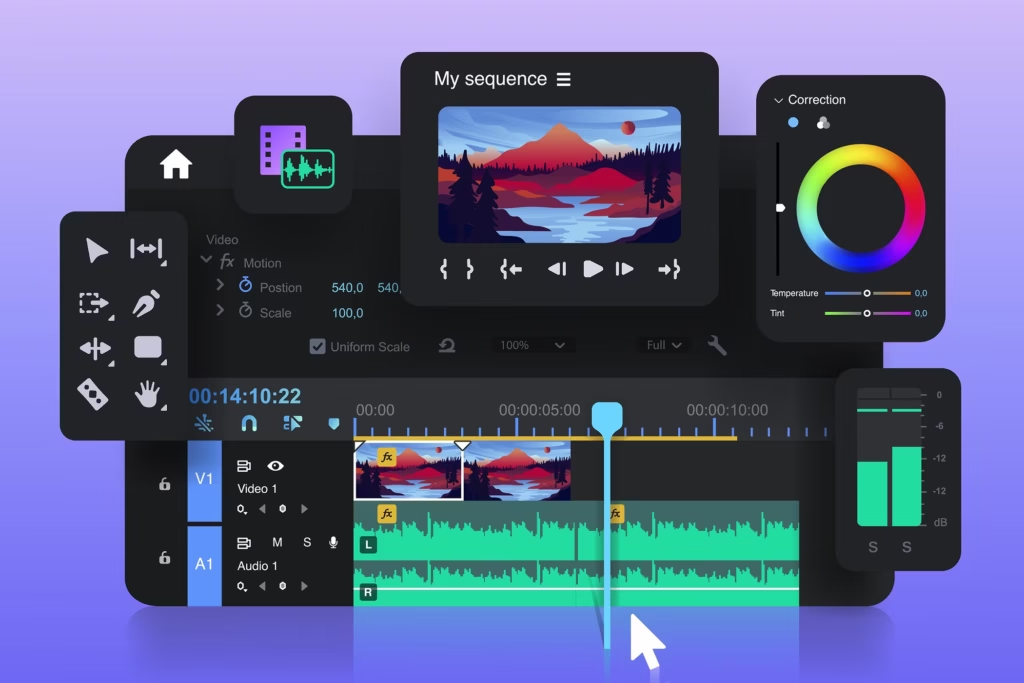In the world of video editing, visuals tell a story—but it’s the music that brings it to life. Whether you’re creating a cinematic short film, a YouTube vlog, or a brand commercial, the power of music in video editing can never be underestimated. It sets the tone, drives the emotion, and elevates the entire viewing experience.
In this blog, we’ll explore how music enhances video content, the psychology behind sound in storytelling, and how you can choose the perfect track for your project.
-
Music Sets the Emotional Tone
One of the most powerful functions of music in video editing is its ability to evoke emotions. A soft piano melody can convey sadness or reflection, while a fast-paced electronic beat builds excitement and anticipation. The emotional connection music creates helps viewers engage more deeply with your content.
-
Enhances Storytelling and Narrative Flow
Music acts as a narrative tool in video production. It can signify transitions, highlight key moments, or underscore dramatic beats in the story. For editors, music becomes a timeline guide—helping to pace scenes and create rhythm.
For example, in documentaries, background music helps maintain interest and creates a sense of continuity. In films, a well-timed score intensifies action scenes or enhances romantic moments.
-
Builds Brand Identity in Marketing Videos
In commercial or corporate videos, background music is key in building brand identity. Upbeat, modern tracks may reflect a youthful, energetic brand, while classical music might suggest sophistication and trust. Choosing the right music for marketing videos directly impacts how your audience perceives your brand.
-
Increases Viewer Engagement and Retention
Music is proven to increase viewer engagement and retention. It helps sustain attention, especially on platforms like YouTube or Instagram, where audiences scroll quickly. Music can also create memorable content, leading to better recall and sharing.
According to studies, videos with music have a higher chance of being watched till the end compared to those without it.
-
Improves Video Transitions and Flow
In the editing timeline, music acts like glue. It helps smoothen transitions, hides cuts, and maintains the visual flow. A good soundtrack masks abrupt edits and makes scene changes feel natural and seamless. This makes your video look more polished and professional.
Tips for Choosing the Right Music for Your Video
- Match the Mood: Choose a track that complements your video’s theme.
- Consider Your Audience: Use genres that resonate with your target demographic.
- Mind the Tempo: Fast tempos suit action or sports, while slow ones suit emotional or dramatic content.
- Use Royalty-Free Music: To avoid copyright issues, use platforms like Epidemic Sound, Artlist, or YouTube Audio Library.
- Edit to the Beat: Align your cuts or transitions with the music’s rhythm for a more dynamic result.
Conclusion: Let Music Be Your Secret Editing Weapon
Whether you’re a beginner or a professional editor, understanding the power of music in video editing can significantly elevate your content. Music is more than just background filler—it’s an emotional, narrative, and branding powerhouse. When used effectively, it turns ordinary videos into unforgettable stories.
So next time you sit down to edit, don’t just think visually—think musically.

